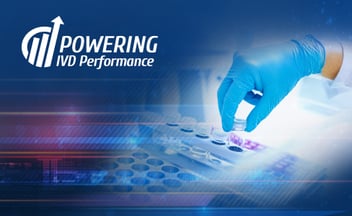In a healthcare setting, it’s critical to have a set of standards in place to measure the quality of your processes and outcomes. There needs to be an all-encompassing set of procedures that look at how your operations lead to the diagnostic results that your laboratory team gets with each test.
.jpg?width=2624&height=1472&name=A%20clean%20professional%20(1).jpg)
Quality control is a component of process control and essential to the quality management system. It monitors the processes related to the examination phase of testing and allows for detecting errors in the testing system, giving the laboratory confidence that test results are accurate and reliable before patient results are reported.1
QC procedures include components like daily checks and calibrations to ensure that all diagnostic instruments are operating as they should and producing reliable results. You can implement QC charts to help your team tracks trends or deviations in test results by calibrating instruments regularly, conducting internal quality control checks, and identifying and addressing errors promptly. Quality control serves as the first line of defense against errors in the laboratory, ensuring the instruments used for testing are in optimal condition.2
With this blog, we will go into detail about the integral role that quality control plays in ensuring diagnostic accuracy, standardization, and error reduction, while highlighting the value of robust quality control practices in the diagnostic space.
The Crucial Role of Diagnostics in Modern Healthcare
Laboratory professionals save lives every day through their diagnostic work, making the need for QC procedures essential for all healthcare organizations. According to the Centers for Disease Control, 70% of today’s medical decisions depend on laboratory test results, showing the important role of clinical laboratories in today’s healthcare system. Additionally, 14 billion laboratory tests are ordered annually—safety, quality, and cost effectiveness in laboratory testing are required for effective diagnosis and treatment of disease.3
Because the role diagnostic labs play in the healthcare space is so critical, it creates very little margin for error. Both patients and providers deserve to know that the diagnostic results are accurate and reliable. Experts estimate that 40,000–80,000 deaths occur annually from preventable diagnostic errors.4
Because the role diagnostic labs play in the healthcare space is so critical, it creates very little margin for error. Both patients and providers deserve to know that the diagnostic results are accurate and reliable.
Time is another huge factor for diagnostic testing. When a diagnosis is accurate and made in a timely manner, a patient has the best opportunity for a positive health outcome because clinical decision making will be tailored to a correct understanding of the patient's health problem.5
Internal vs. External QC Methods in Diagnostics
Quality control for diagnostic labs can be measured in a couple of ways. Internal and external quality control methods are implemented to ensure the reliability and accuracy of the instruments used in your lab, as compared to the instruments and procedures in other labs.
Indoor quality control uses a stable substance to obtain a detection value of a certain substance on your detection system through repeated detection to examine whether the test results are accurate and stable.6 Internal quality control measures can be tested by performing in-depth checks on all the instruments, control samples, and routine equipment calibration to the industry standards.
External quality assessment is when a stable substance is distributed to various laboratories, and the substance is tested with various instruments to obtain a set of test values. The acceptable range of detection value of the substance is obtained by statistical method.7
For example, SEKISUI Diagnostics developed QC Inside® to help improve operations and cost efficiencies, while providing high-quality patient care by providing extra testing components for external QC testing at no charge.
Quality control plays an independent role in achieving excellence in healthcare diagnostics and patient care. SEKISUI Diagnostics is committed to strengthening patient outcomes by focusing on innovating and developing highly accurate diagnostic tests, reagents, and systems.
References
- Process control – introduction to quality control, Laboratory Quality Management System
- Quality Control Vs. Quality Assurance in Medical Laboratory: Understanding the Difference, Prolisphere
- Strengthening Clinical Laboratories, Centers for Disease Control and Prevention
- Strengthening Clinical Laboratories, Centers for Disease Control and Prevention
- The Diagnostic Process, National Library of Medicine
- How to do internal quality control in laboratory management?, AIVD Biotech
- How to do internal quality control in laboratory management?, AIVD Biotech



Share Article